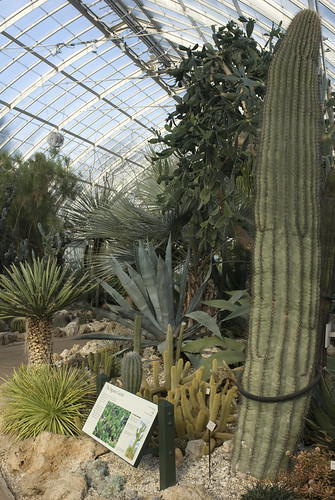A World of Plants Spotlight: Deserts of the World
Posted in Exhibitions on February 4 2010, by Plant Talk
 |
Laura Collier is Marketing Associate at The New York Botanical Garden |
 Deserts cover about a third of the Earth’s surface but are so extreme that just about 5 percent of the world’s population live there. That doesn’t make them devoid of plant life. Quite to the contrary, thousands of plant species have adapted survival techniques, like sun protection and water storage, to be able to live in the desert climate, and you can see some of these in the Deserts of the World Gallery in A World of Plants in the Enid A. Haupt Conservatory.
Deserts cover about a third of the Earth’s surface but are so extreme that just about 5 percent of the world’s population live there. That doesn’t make them devoid of plant life. Quite to the contrary, thousands of plant species have adapted survival techniques, like sun protection and water storage, to be able to live in the desert climate, and you can see some of these in the Deserts of the World Gallery in A World of Plants in the Enid A. Haupt Conservatory.
Cacti, the plants we typically think of when talking about deserts, come in many shapes and sizes. One of the most famous in the United States is the saguaro of the Sonoran Desert in the southwestern part of the country. Saguaros can grow to 50 feet tall with roots extending 100 feet into the ground, and can live up to 200 years. These giants play an important role in the desert, providing food and shelter for animals, insects, and birds.
Across the ocean (and in the next part of the gallery), in the deserts of Africa, grow aloes, euphorbias, and other succulents. Don’t be fooled—they’re related to but are not actually cacti. In this gallery, take a look at the lithops: They look like living stones and grow in sand-free areas, like the Namib Desert in southwestern Africa, which has many pebbles.
The striking desert galleries provide an impressive contrast to the humid rain forest galleries on the other side of the Conservatory.

